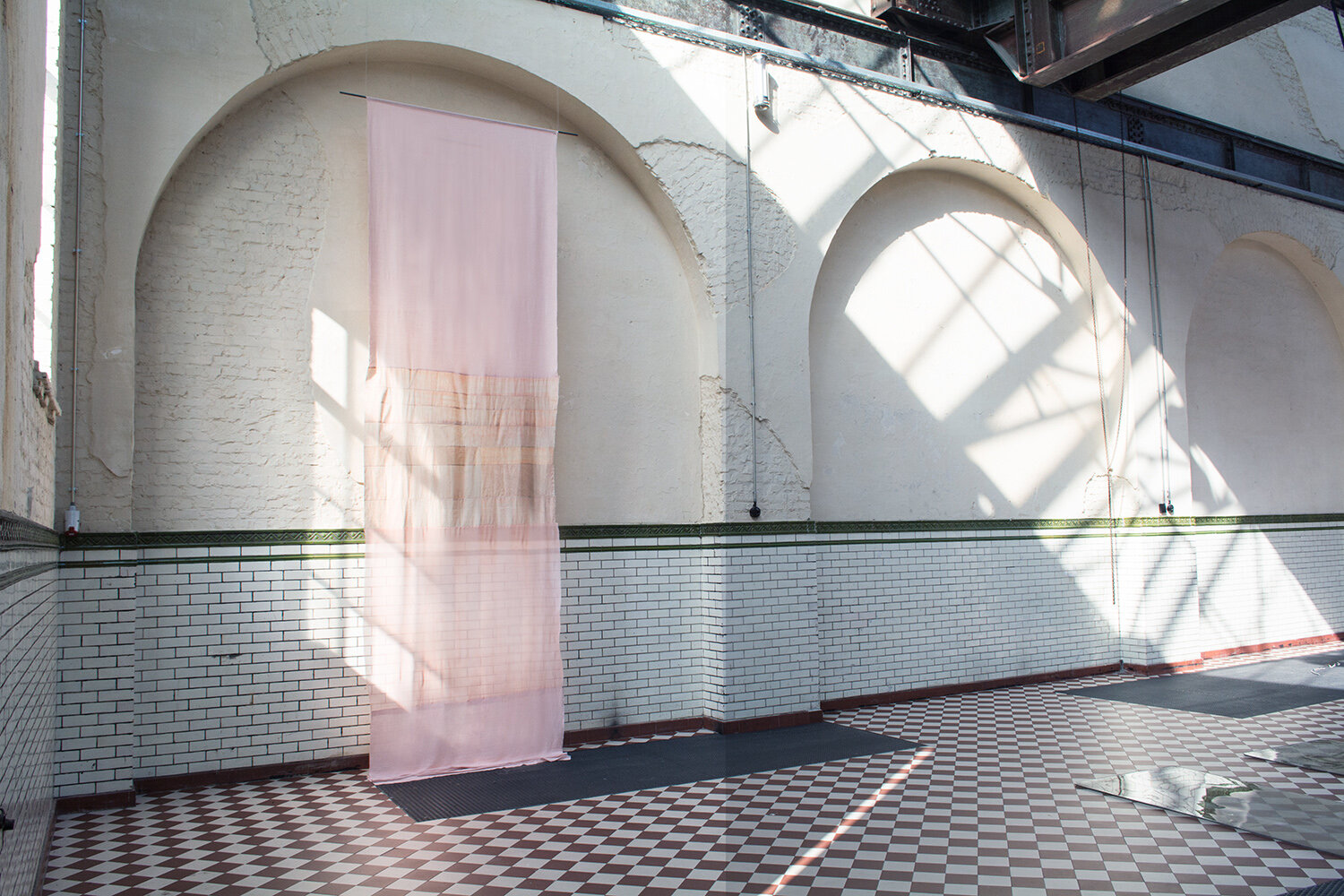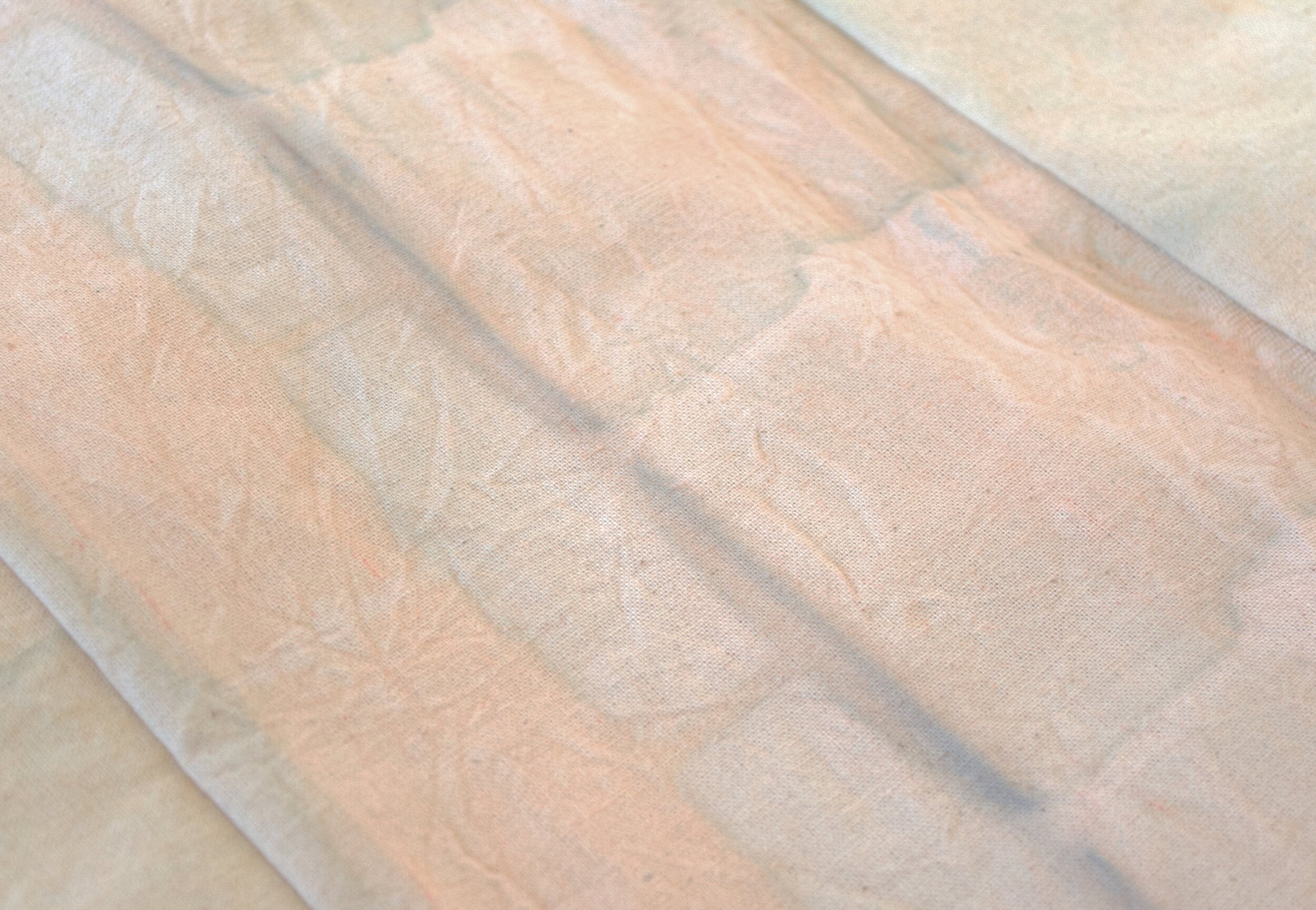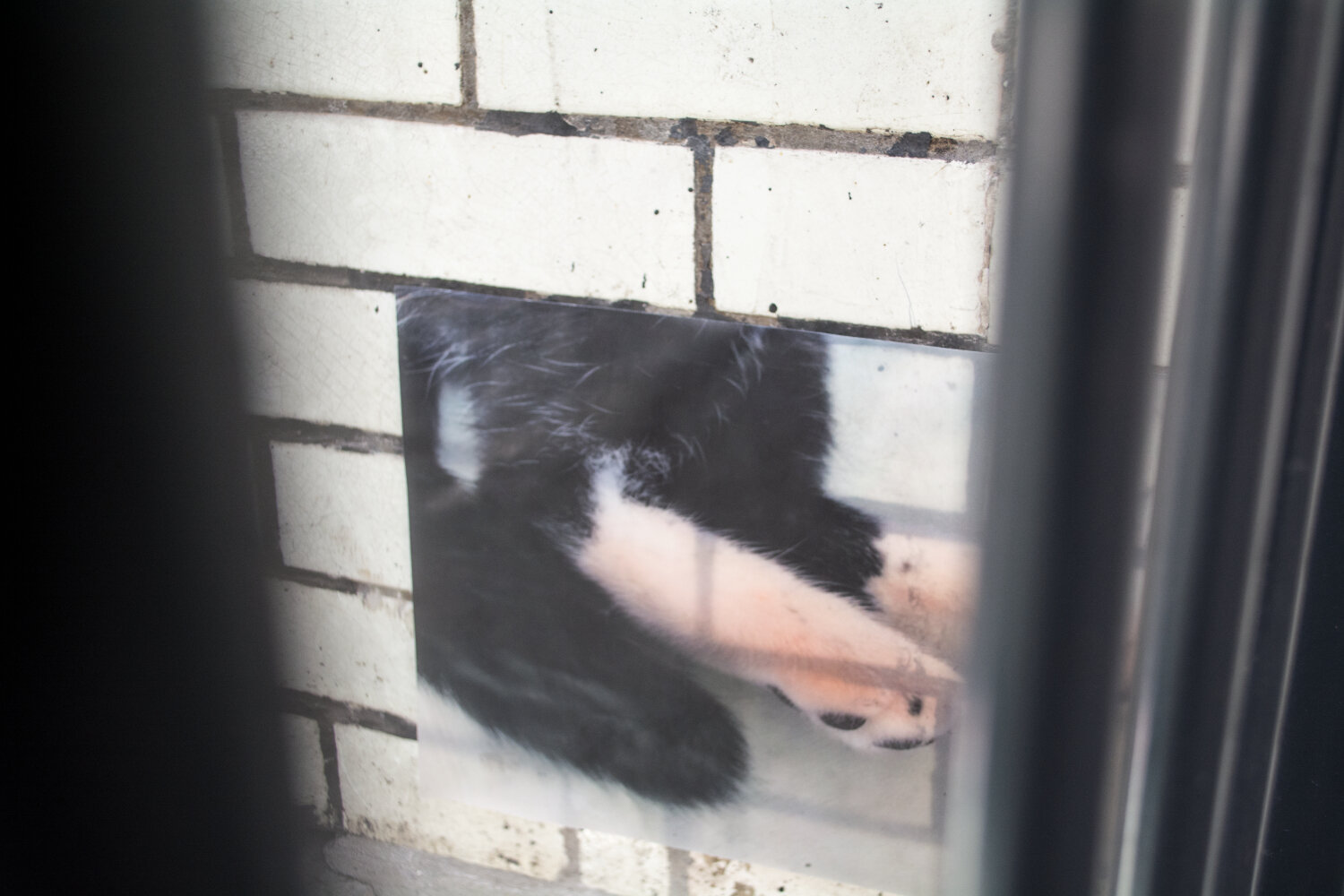SHIMMER SEEN ON ELASTIC ID CARDS OR JELLYFISHES
Arthrospira platensis blue, Chlorella golden, activated charcoal, yellow clear Ocher, red Toluidine, burnt Sienna, resin, linen, cotton, silk, coloring plants: Hypericum perforatum, Isatis tinctoria, Tanacetum vulgare, Alcea rosa var.nigra, Helianthus maximiliani, Coreopsis tinctoria
Time-based acts of researching, nurturing, and harvesting are all embedded in Sina Hensel’s artistic practice. Her studio becomes a place of cohabitation, an ecosystem that allows her to reflect on the means of production of a work, starting with the growth of materials. Algae, colouring plants, and cats are all living beings that partake in her creative process. The artist experiments with tinctorial properties of living organisms and combines them with traditional dyeing techniques to produce her own non-toxic pigments. These are later applied to translucent textiles, mixed with resin, or embedded in glass. The resulting works function as fragile documentation of the many parameters that influenced their realisation: changing light conditions in the studio, a conversation with a neighbour, the view out of the window, a cat’s movement. When the works enter the exhibition space, their state is everything but final, as the pigments continue to change with time and atmospheric conditions. Immaterial and invisible parameters over which the artist has no control become the main agent of transformation. Sina’s colours have lives of their own.
The installation Shimmer seen on elastic ID cards or jellyfishes consists of various elements produced especially for the exhibition space of CIAP. On the floor, liquid-like surfaces capture the sunlight entering through the windows. The resin used for the sculpture is tainted when still in a liquid state, with blue algae (arthrospira platensis) and charcoal powder. Every time when Sina Hensel works in a new place, another colour enters her palette. In this case, it has been black, reminiscent of coal present in the soil all over the former mining site of Winterslag. This industrial resource is seen here from a painterly perspective. The resin sculptures become transparent shells, incarnating the history of the surrounding landscape.
The same charcoal pigment, in combination with ochre, a natural clay pigment, and blue and yellow algae, was also used in the painting composed of pieces of linen and cotton fabric sewn together. The large format of this painting is unusual for Sina Hensel’s oeuvre, which includes mostly works scaled according to her body. Though non-figurative, her painted works could be inscribed in the tradition of still life paintings, capturing the soul of the objects and beings that led to their execution.
Sina is fascinated by different temporalities and transformations of organic matter: from seeds to flowers, from plants to pigments, from trees to charcoal. What could better embody this interest than a garden? A colouring garden that had been planted at CIAP director’s backyard last spring will in the future be moved to the new house of CIAP and FLACC at C-Mine. In the meantime, Petrichor presents a small flower garden on the terrace. The plants selected (hypericum perforatum, isatis tinctoria, tanacetum vulgare, alcea rosa) are known for their colouring qualities. These plants will remain at CIAP as a resource to be nurtured; each of them withholds a promise of a painting.
Lucie Ménard, curator of Petrichor, CIAP Kunstverein Genk/BE






















